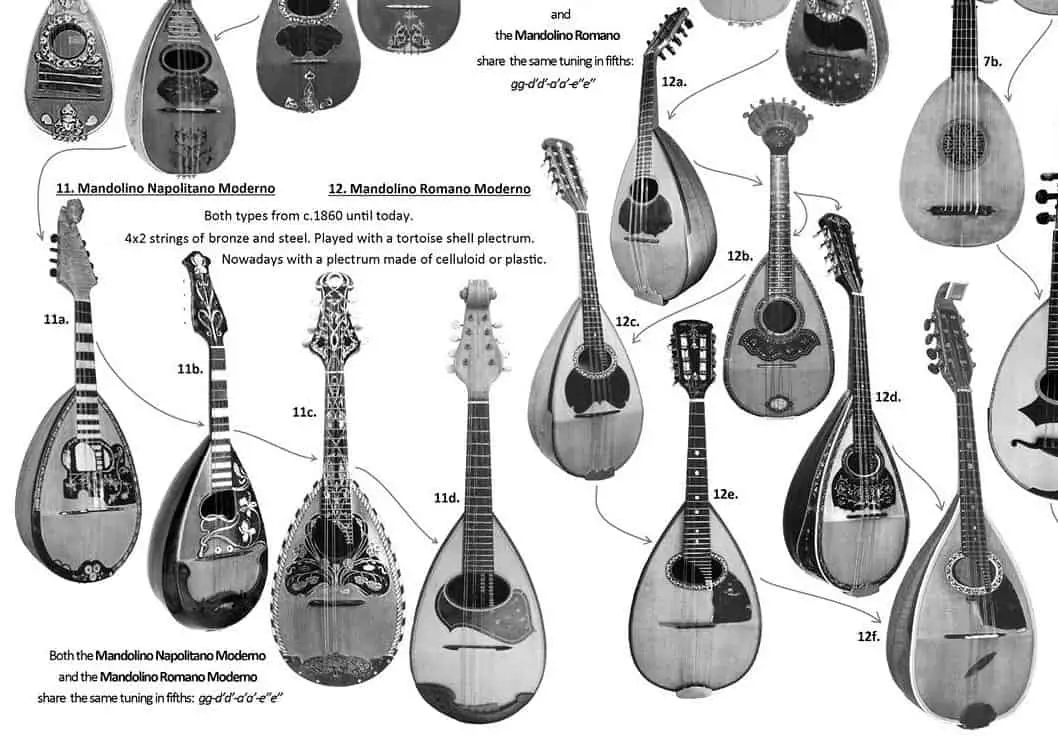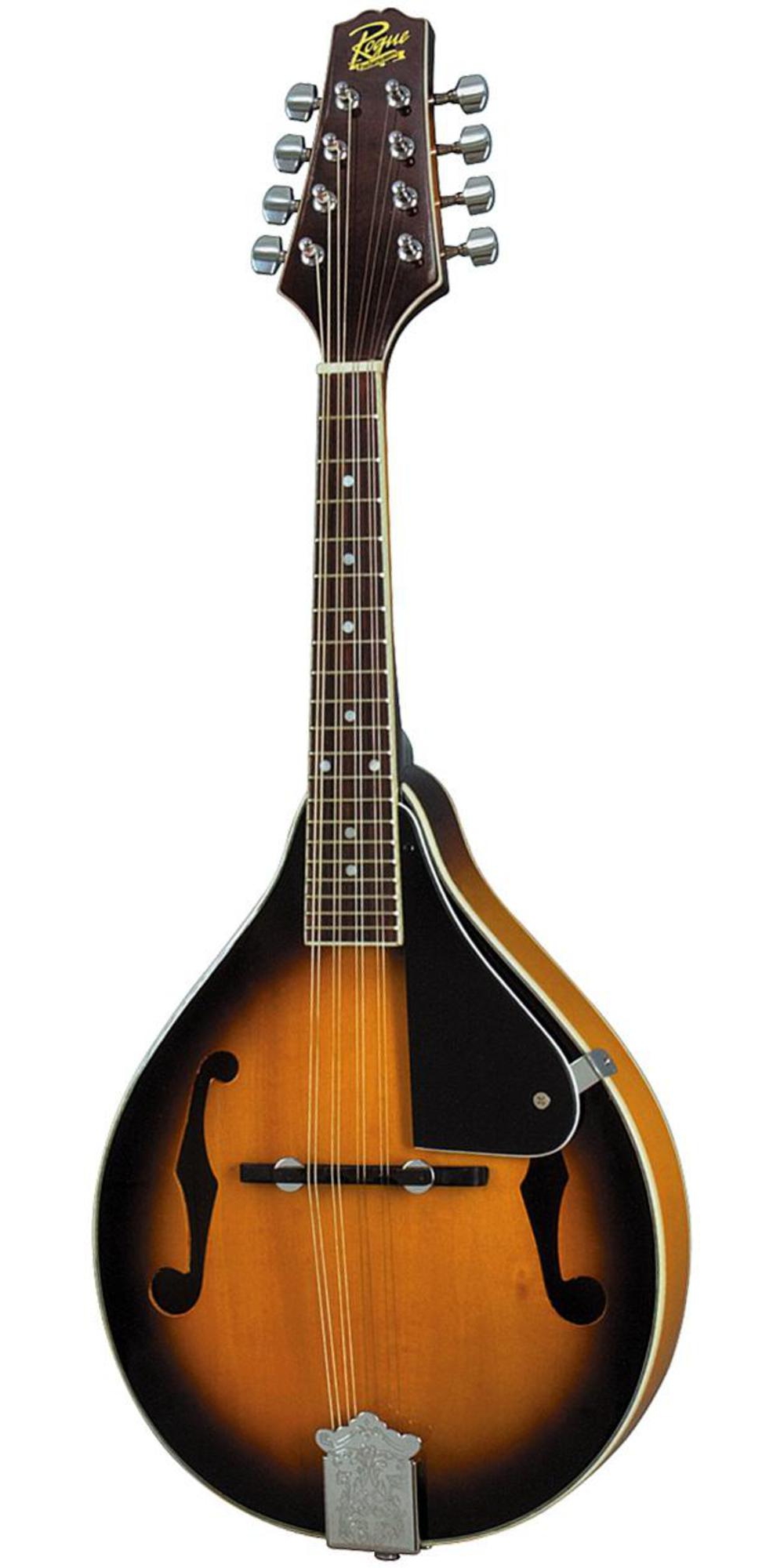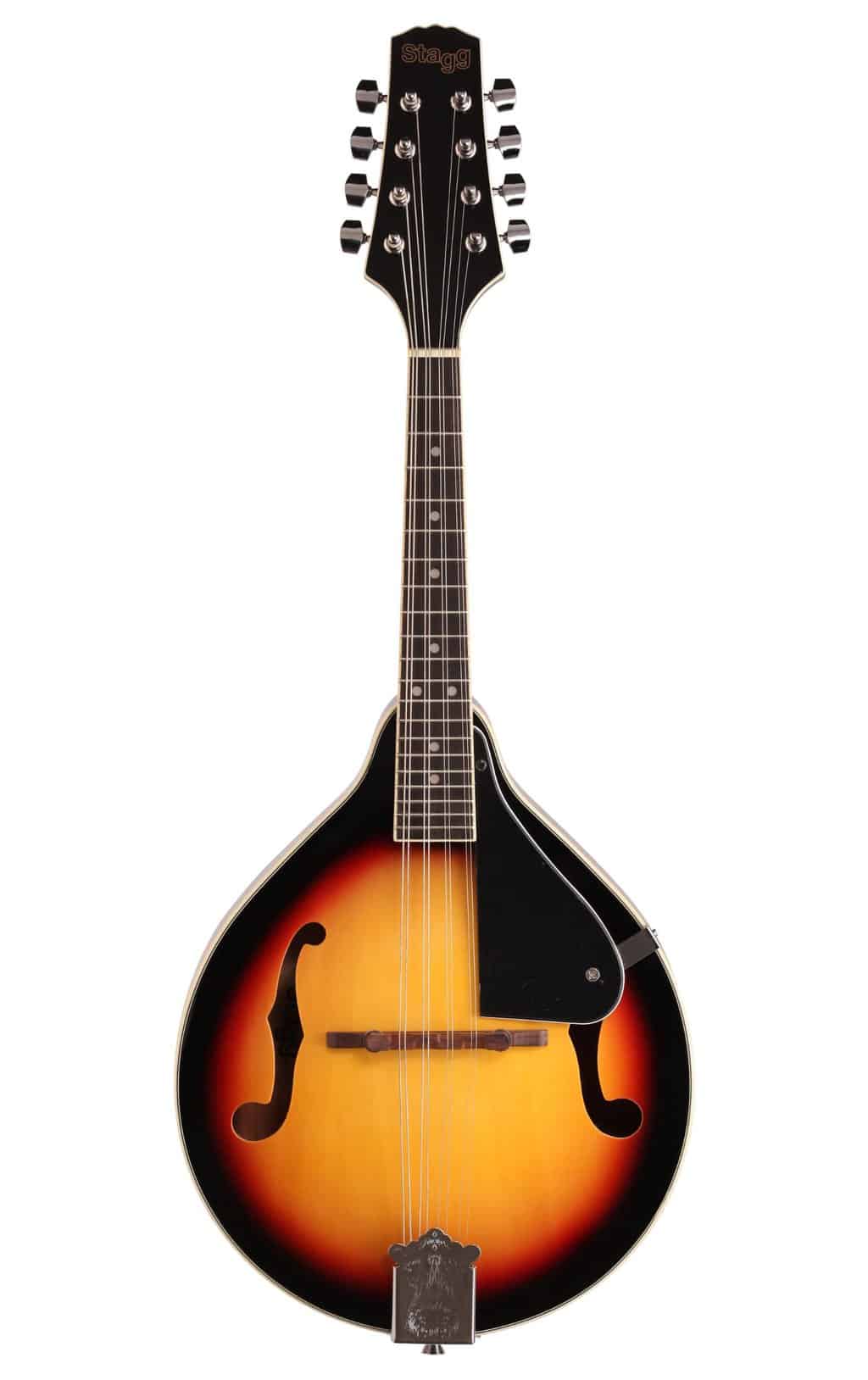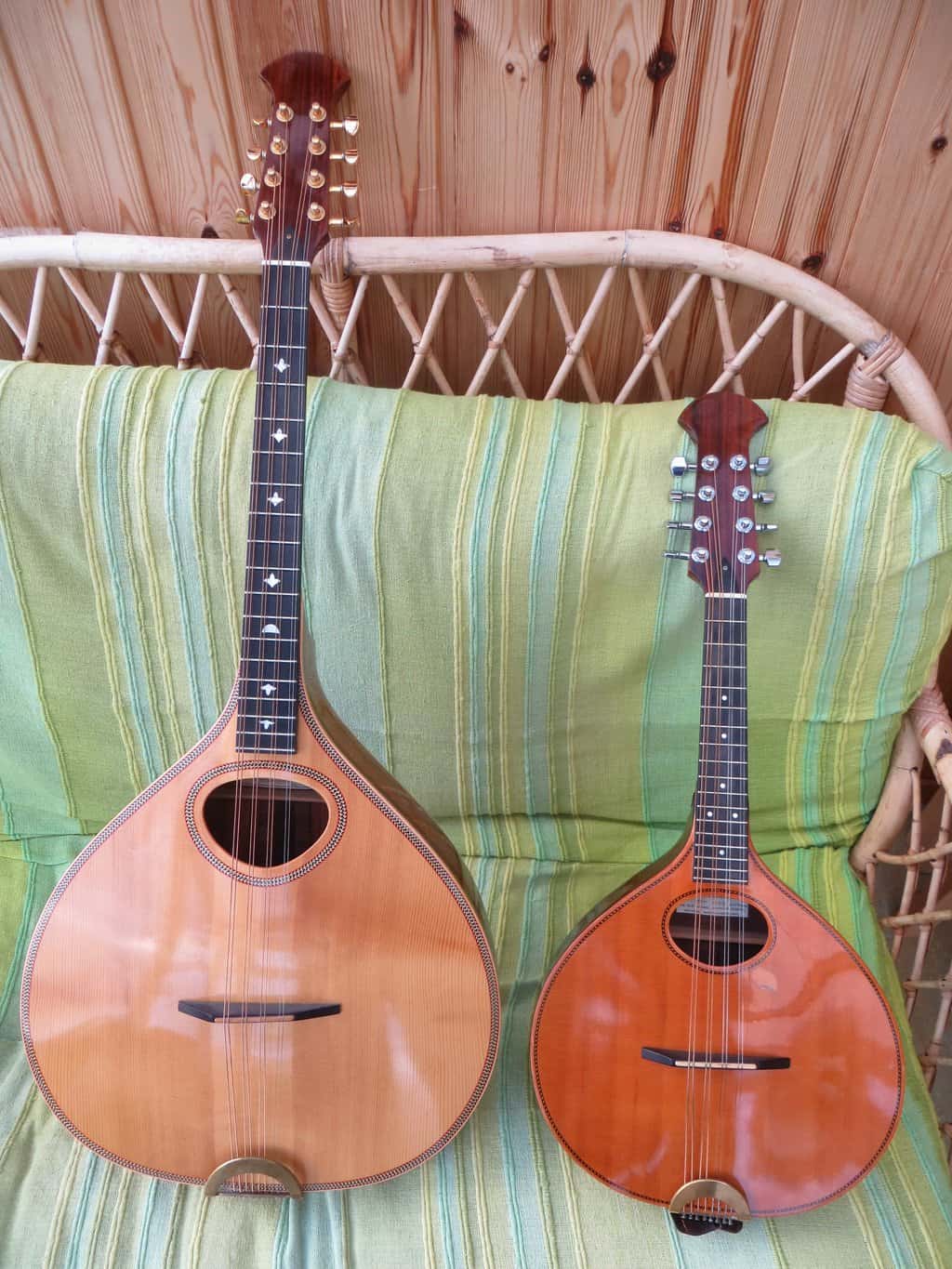As a musician and a fan of string instruments, I’m always curious to learn more about the different types of mandolins. After all, the mandolin is a captivating and versatile instrument with a unique sound. So, what are the different types of mandolins? In this article, I’ll be exploring the different types of mandolins and their unique characteristics.
History of Mandolins
Mandolins have been around since the 17th century, but their modern form began to take shape in the late 19th century. The original mandolin was a four-string instrument, similar to a lute, that was used in folk music in Italy. The modern eight-string mandolin was developed in the early 1900s by Italian instrument makers.
The mandolin went through a revival in the 1920s and 1930s when it was adopted by American country and bluegrass musicians. The instrument’s popularity continued to grow throughout the 20th century, and it has become a staple of many types of music, from jazz and classical to rock and metal.
Today, mandolins come in a variety of shapes and sizes, including the traditional bowl-back design and the modern flat-back design. They are also available in a variety of materials, including wood, metal, and plastic. There is also a wide range of pickups and other accessories available for the modern mandolin.
Types of Mandolins
A-Style
An A-style mandolin is the most common type of mandolin and is shaped like a teardrop. It has a flat back and a round body with a curved top, resembling an A-shape. It typically has 8 strings and is tuned in fifths.
F-Style
F-style mandolins are similar in shape to A-style mandolins, but have a more pronounced “F” shape. They have a longer neck, a cutaway on the lower bout, and usually have a carved or arched top.
Bowlback
Bowlback mandolins are distinct from the other types of mandolins in that they are not shaped like an A-style or F-style. Instead, they have a round back shaped like a bowl and typically have a more ornate body.
Electric
Electric mandolins are equipped with pickups and can be plugged into an amplifier to produce an electric sound. They are typically shaped like an A-style or F-style mandolin, but can also have a bowlback design.
Flatback
Flatback mandolins are similar to A-style and F-style mandolins, but they do not have a curved top. They typically have a flat top and a flat back, and are smaller and more lightweight than other types of mandolins.
Mandolin Accessories
Mandolin accessories enhance the sound, comfort, and playability of the instrument. They are a great way to customize the mandolin to your own style. Some of the most common mandolin accessories include picks, straps, cases, bridges, tuners, strings, and capos. Picks come in a variety of shapes and materials, with different sizes and designs to suit different playing styles. Straps help to support the mandolin while playing, allowing for playing in a more comfortable, relaxed position. Cases provide protection and are available in soft, hard, and hybrid varieties. Bridges come in several different materials, and the type of bridge used can have a significant impact on the sound of the mandolin. Tuners help to keep the mandolin in tune and come in both mechanical and electronic varieties. Strings come in a variety of materials, sizes, and gauges, and are chosen to match the player’s style and preference for sound. Capos are used to change the key of the mandolin, and can help to create a unique sound when playing.
Playing Style
Mandolins come in different playing styles. Flatpicking is the most common, where the musician plays with a pick in a strumming motion. Clawhammer is a fingerpicking style, which involves picking out individual notes with the thumb and index finger. Chords are usually played with the palm and other fingers of the hand. Other styles include strumming, tremolo, and sawing. These styles can be applied to both classical and folk music. Certain instruments, such as the mandola, mandocello, and octave mandolin, are better suited to certain playing styles due to their larger size and deeper tones.
Mandolin Music
| Type of Mandolin | Music Type |
|---|---|
| A-style | Country, folk, bluegrass |
| F-style | Classical, jazz, bluegrass |
| Round-back | Classical, jazz, bluegrass |
| Electric | Rock, pop, bluegrass |
The mandolin is a popular stringed instrument used in many genres of music. Different types of mandolins are suited for different types of music. A-style mandolins are traditionally used for country, folk, and bluegrass music. F-style mandolins are often used for classical, jazz, and bluegrass music. Round-back mandolins are suited for classical, jazz, and bluegrass music, while electric mandolins are often used in rock, pop, and bluegrass music.
Care and Maintenance
| Item | Description |
|---|---|
| String Cleaning | Clean strings regularly with a soft cloth to remove dirt and grime. |
| Conditioning | Condition the fingerboard and bridge with an appropriate oil. |
| Polishing | Polish the mandolin’s finish with a suitable polish. |
| Storage | Store inside a case in a cool, dry place away from direct sunlight. |
Frequently Asked Questions
What are the features of a Traditional Mandolin?
Traditional mandolins feature a bowl-shaped body, a short neck and an oval sound-hole. They typically have 8 metal strings that are tuned in pairs of fourths, with the lower four strings being tuned an octave higher than the higher four strings. The strings are plucked with a plectrum, with the right hand controlling the melody and the left hand controlling the chords and rhythm. Traditional mandolins also feature a bridge and a tailpiece, with the strings being attached to the bridge and the tailpiece controlling the tension of the strings.
What is the difference between a mandolin and a mandola?
A mandolin is a stringed instrument with 8 strings in 4 double courses, a small body, and a fretted neck. It is most often tuned in perfect fifths and has a bright, twangy sound. A mandola is a larger version of the mandolin with a longer neck and a deeper body. It is usually tuned an octave lower than the mandolin and has a deeper, mellower sound.
What is the best type of mandolin for a beginner?
The best type of mandolin for a beginner is the A-style mandolin. It has a simple, hourglass-shaped body with a flat back, making it easy to hold and play. Its eight strings are tuned in pairs, with the four higher-pitched strings tuned an octave higher than the four lower-pitched strings. The A-style mandolin is suitable for a variety of musical styles, from folk to classical music. It is also relatively inexpensive and easy to find, making it a great option for a beginner.
How do the size and shape of a mandolin affect the sound?
The size and shape of a mandolin can significantly impact the sound it produces. A mandolin with a larger body will generally produce a fuller, richer sound, while a smaller body can deliver a more focused, brighter sound. The shape of a mandolin can also affect the sound, with a bowl-back mandolin typically producing a warm, mellow tone and a flat-back mandolin producing a brighter, snappier sound.
What are the different types of strings used on a mandolin?
The strings of a mandolin generally consist of steel, aluminum, bronze, nickel, and other alloys. Steel strings provide a bright, resonant sound and are the most commonly used. Aluminum strings are less common and produce a softer, mellower sound. Bronze strings are known for their lively, warm tone. Nickel strings are brighter and louder than steel and bronze strings, but mellower than aluminum strings. Other alloys, such as phosphor bronze, brass, and monel, are also used for their unique tonal properties.
Conclusion
Mandolins are stringed instruments that come in a variety of shapes, sizes, and styles. The four most popular types of mandolins are the mandolin, bouzouki, mandola, and octave mandolin. Each type of mandolin has its own unique sound and is used for different genres of music. Depending on the desired sound, players may opt for a different type of mandolin. Whichever type of mandolin is chosen, it can add a unique flavor to any musical performance.





